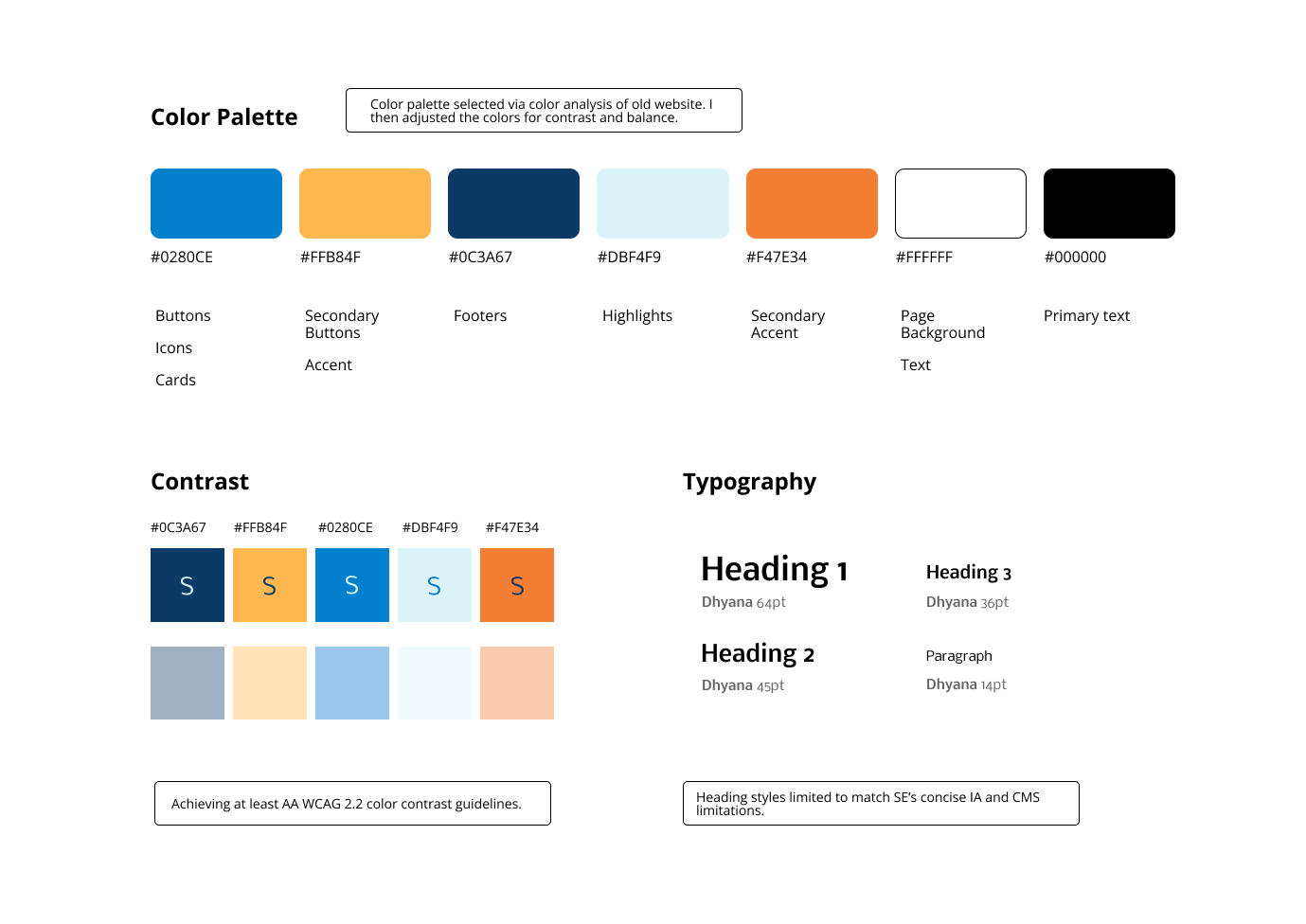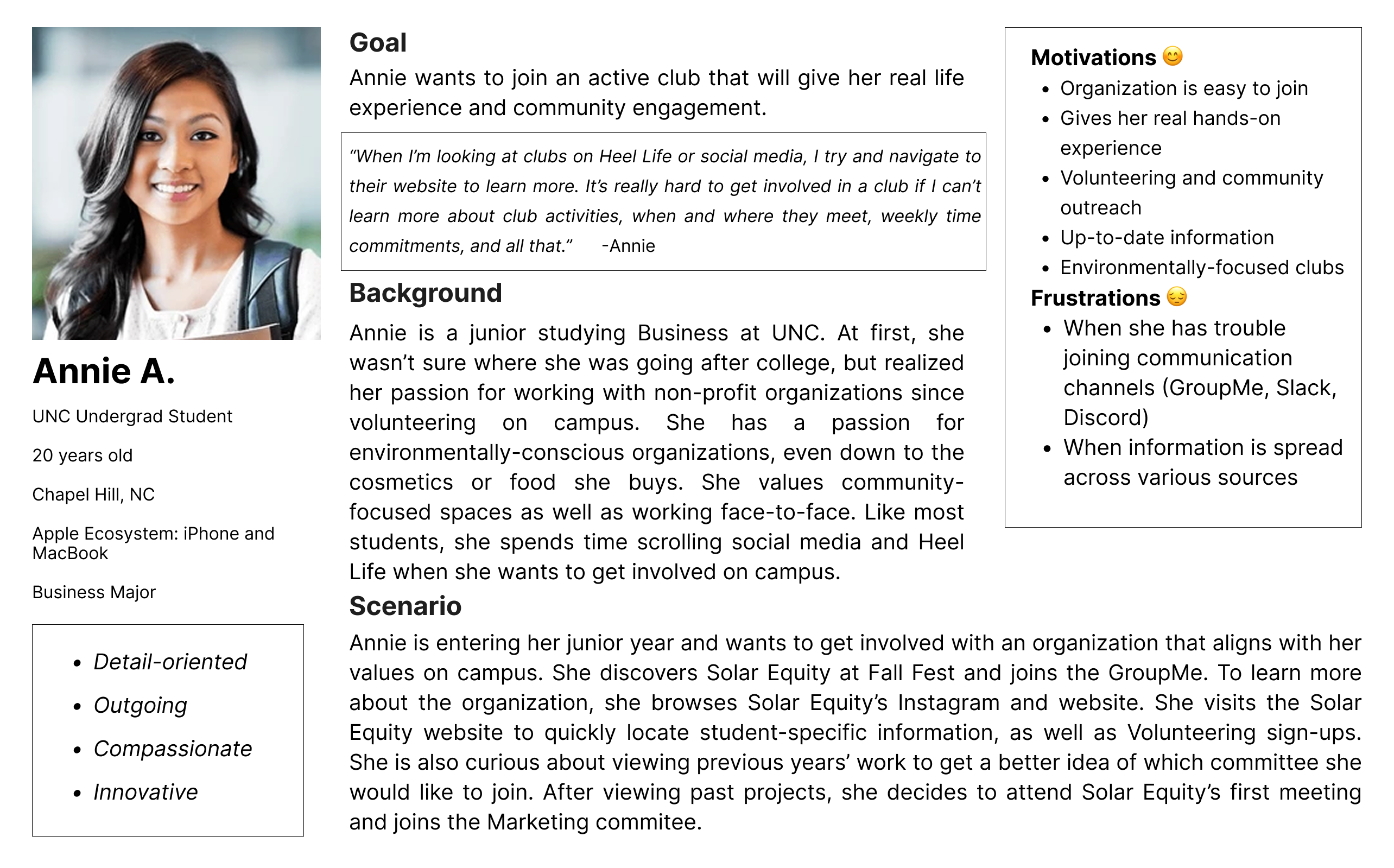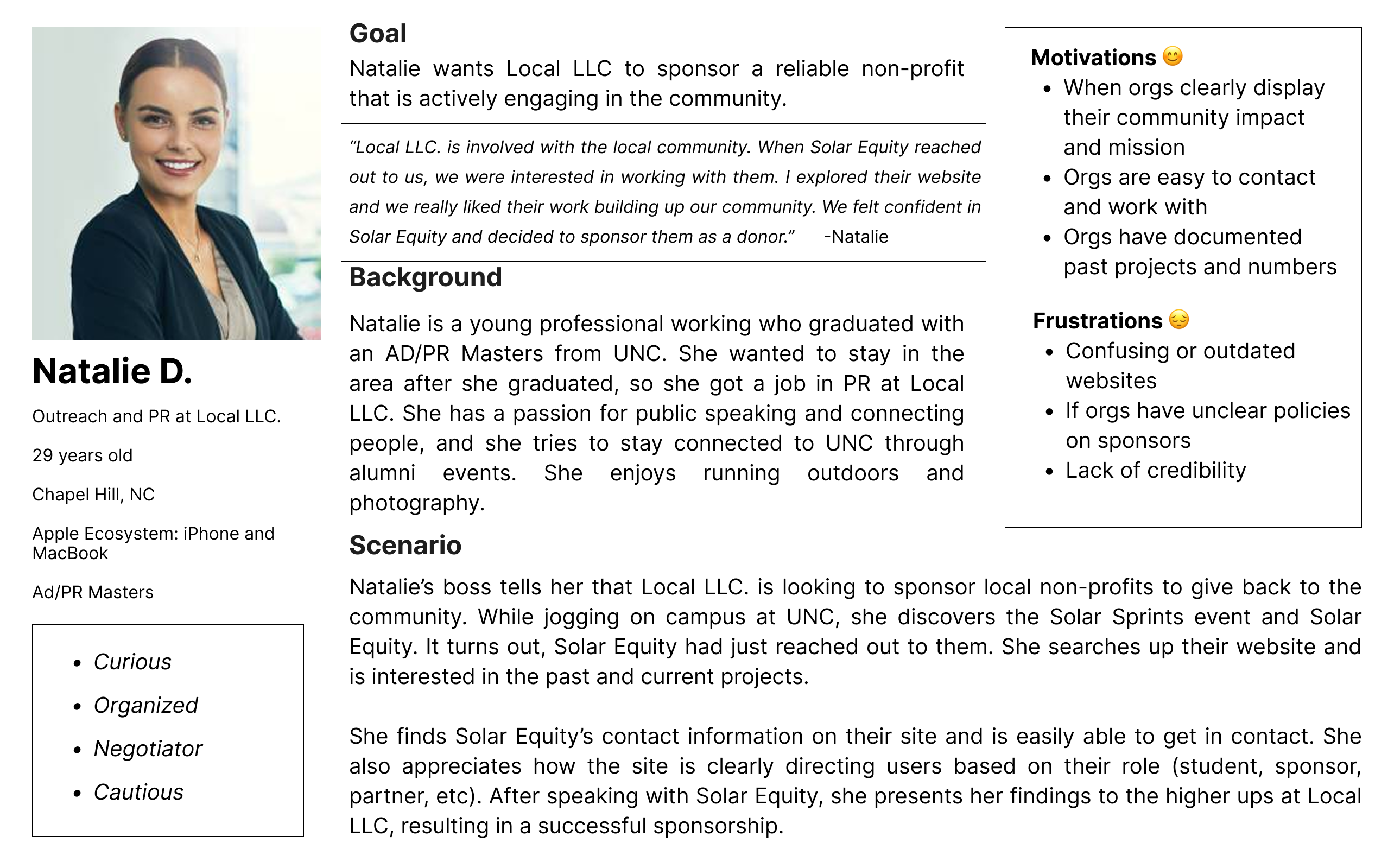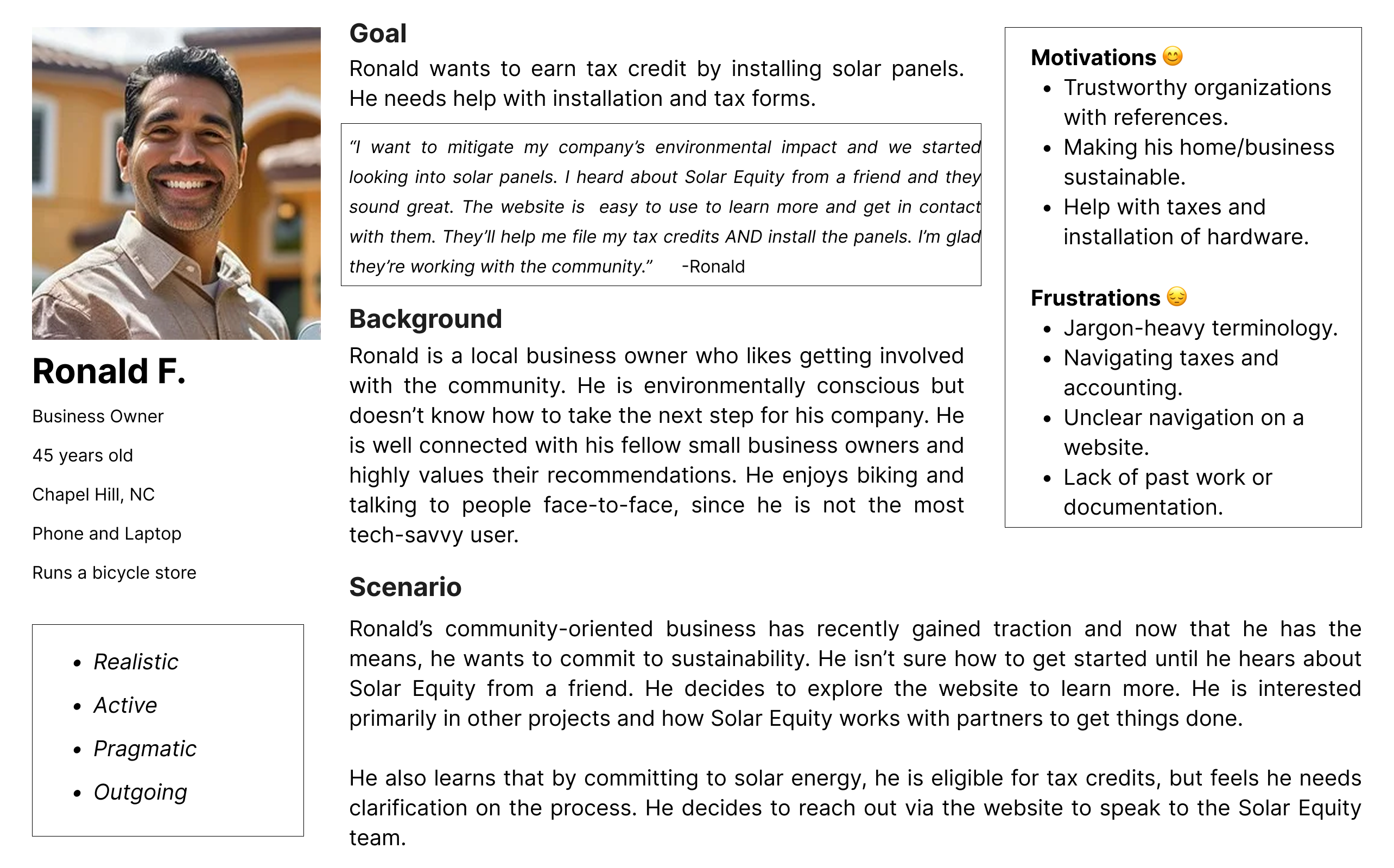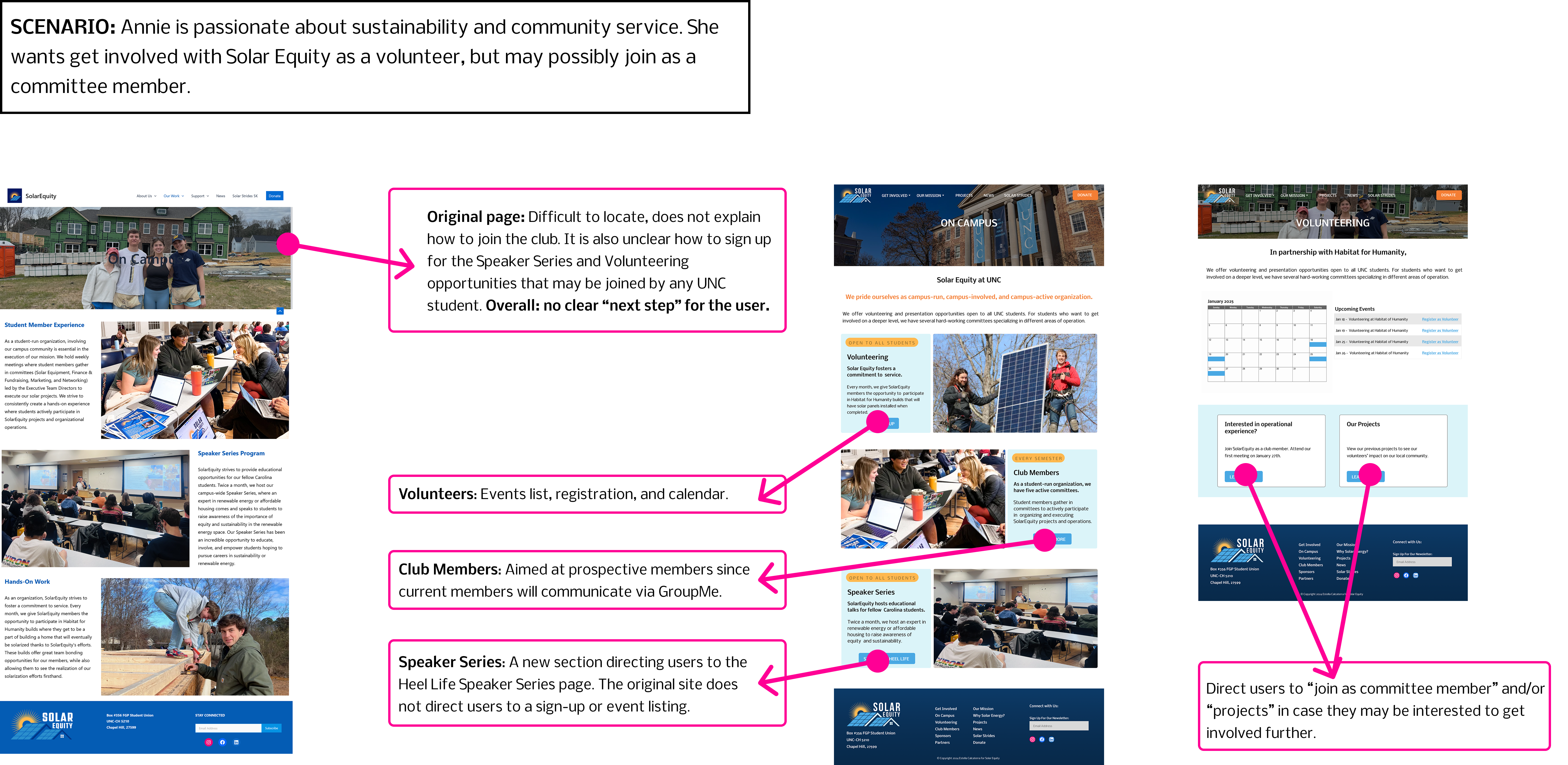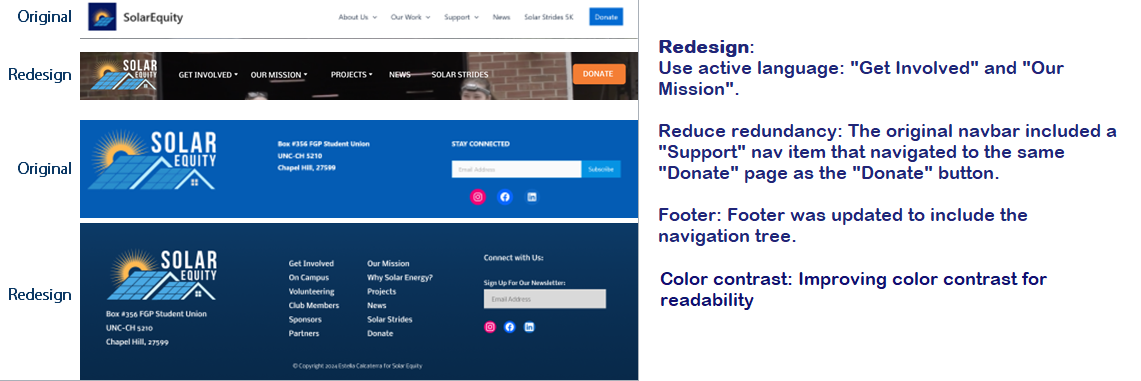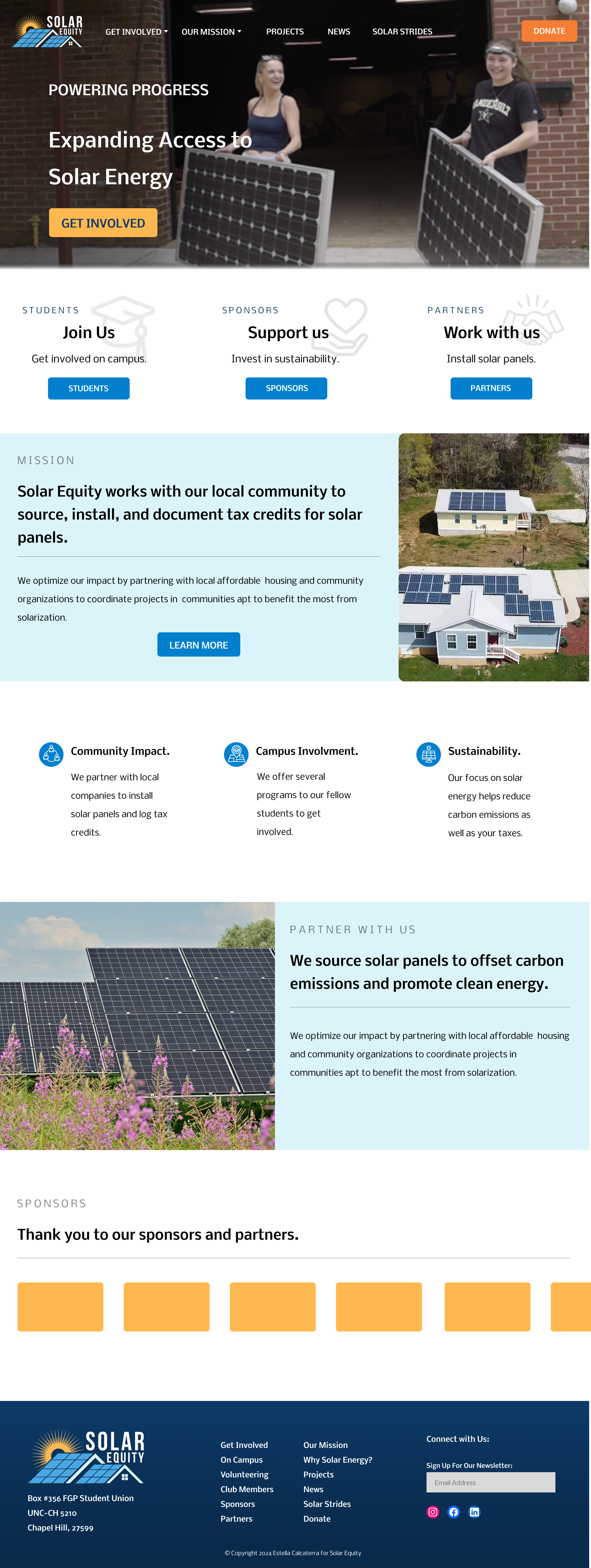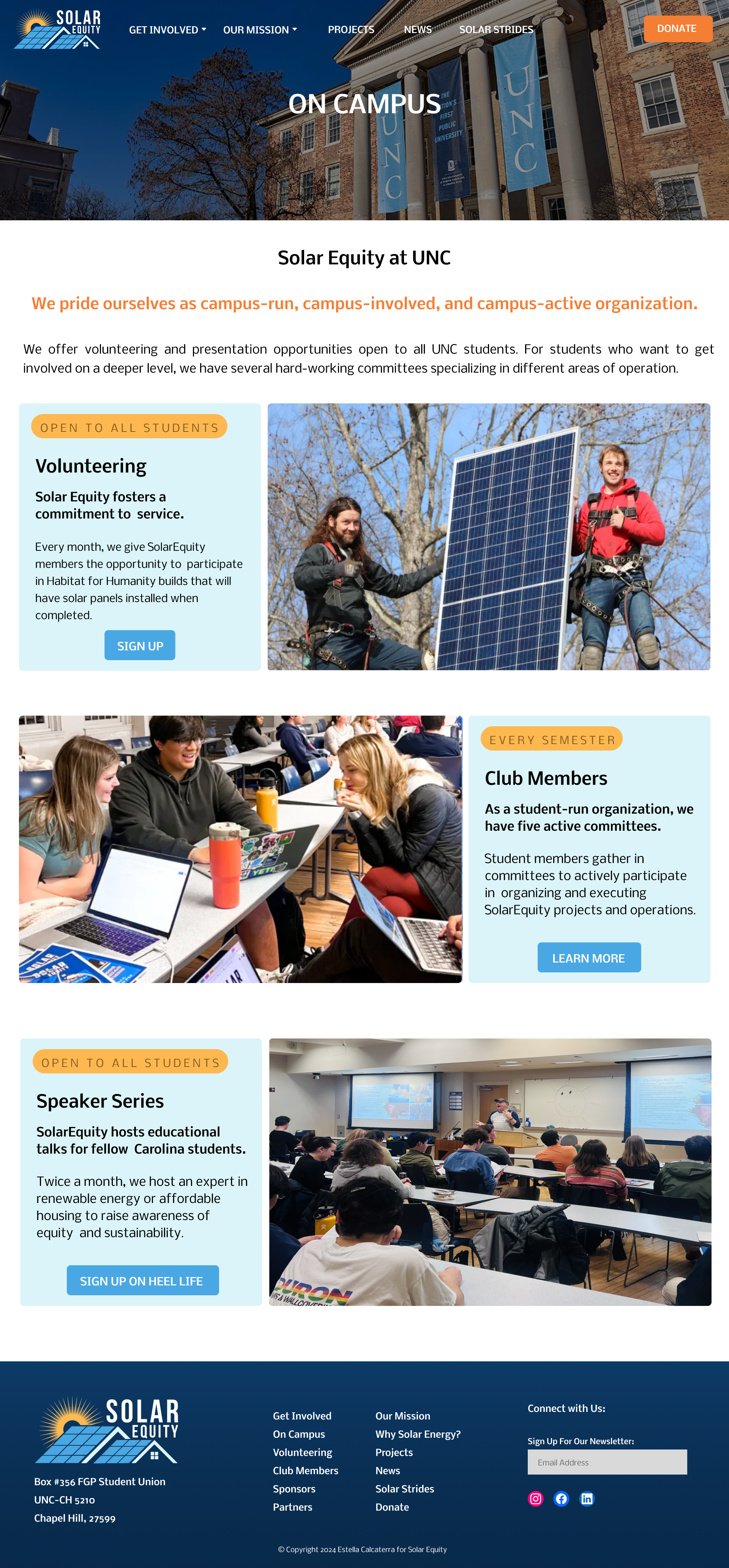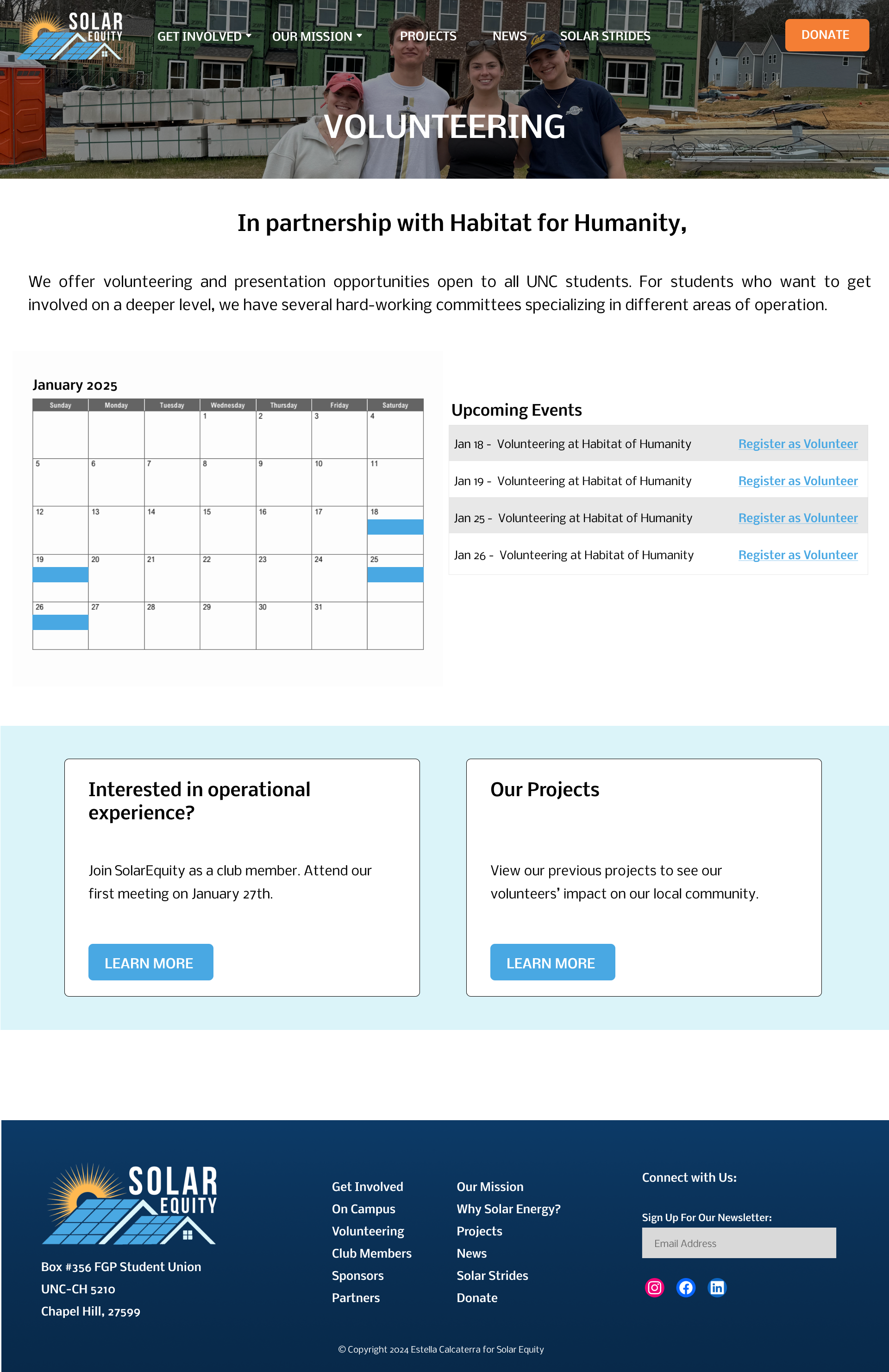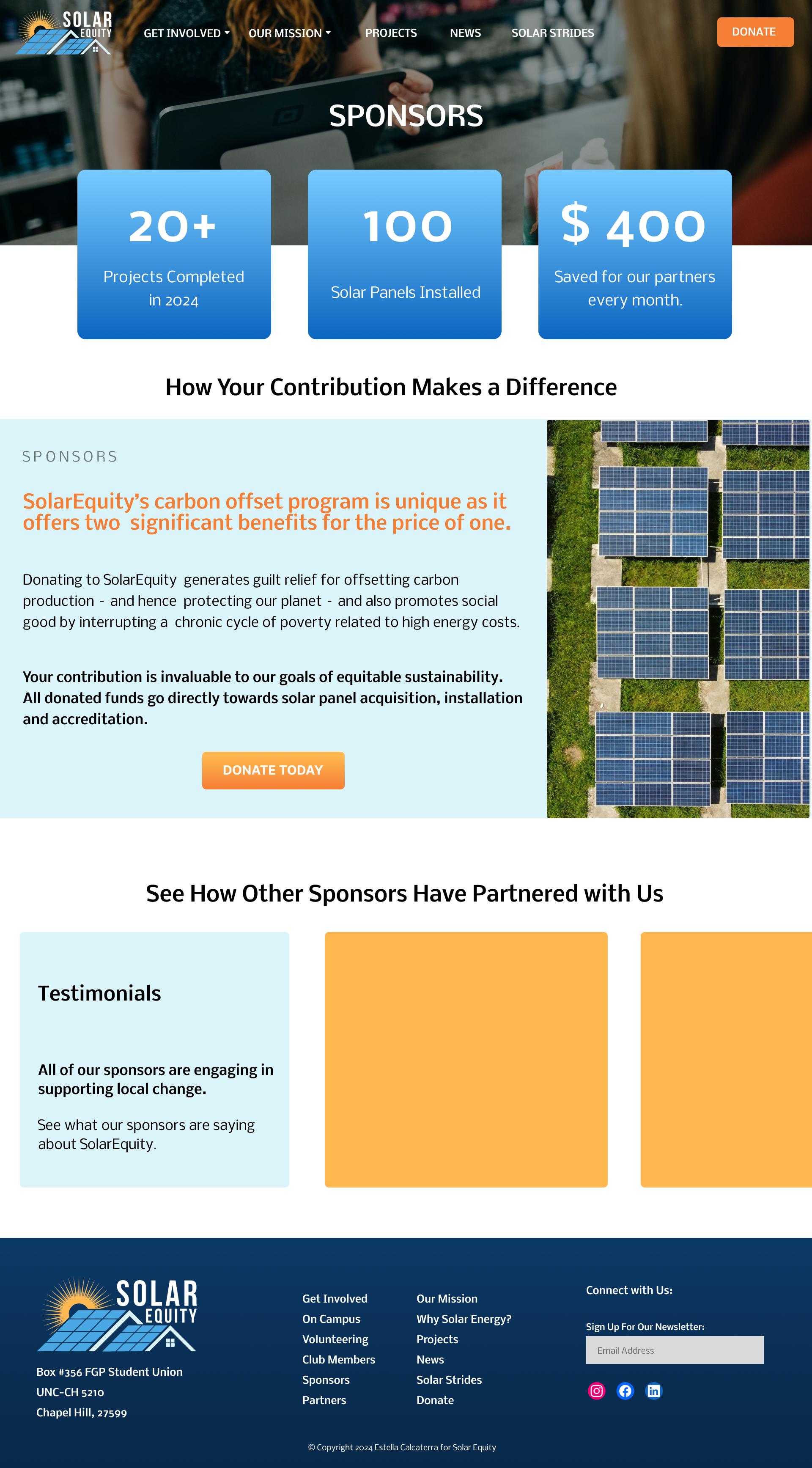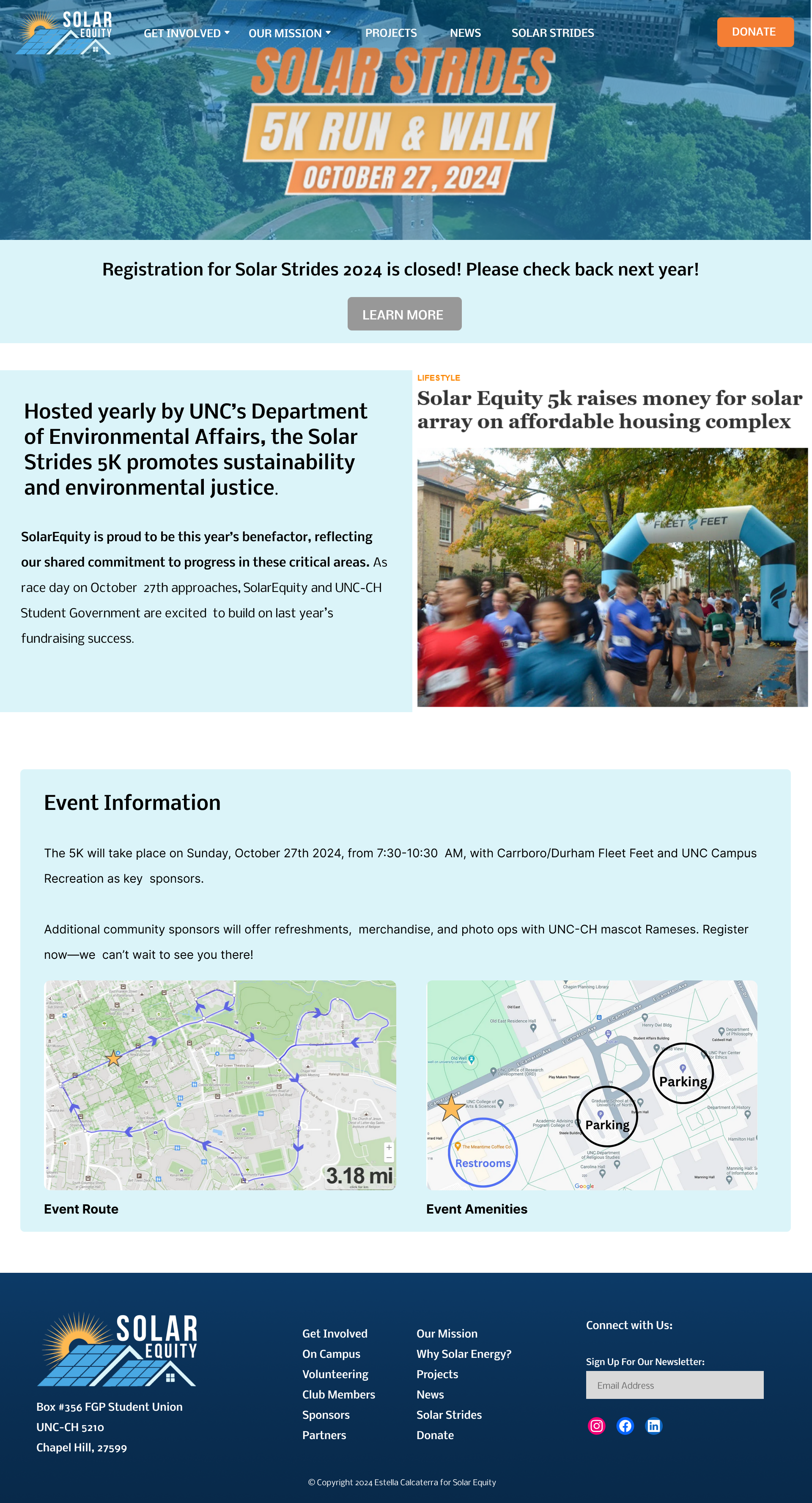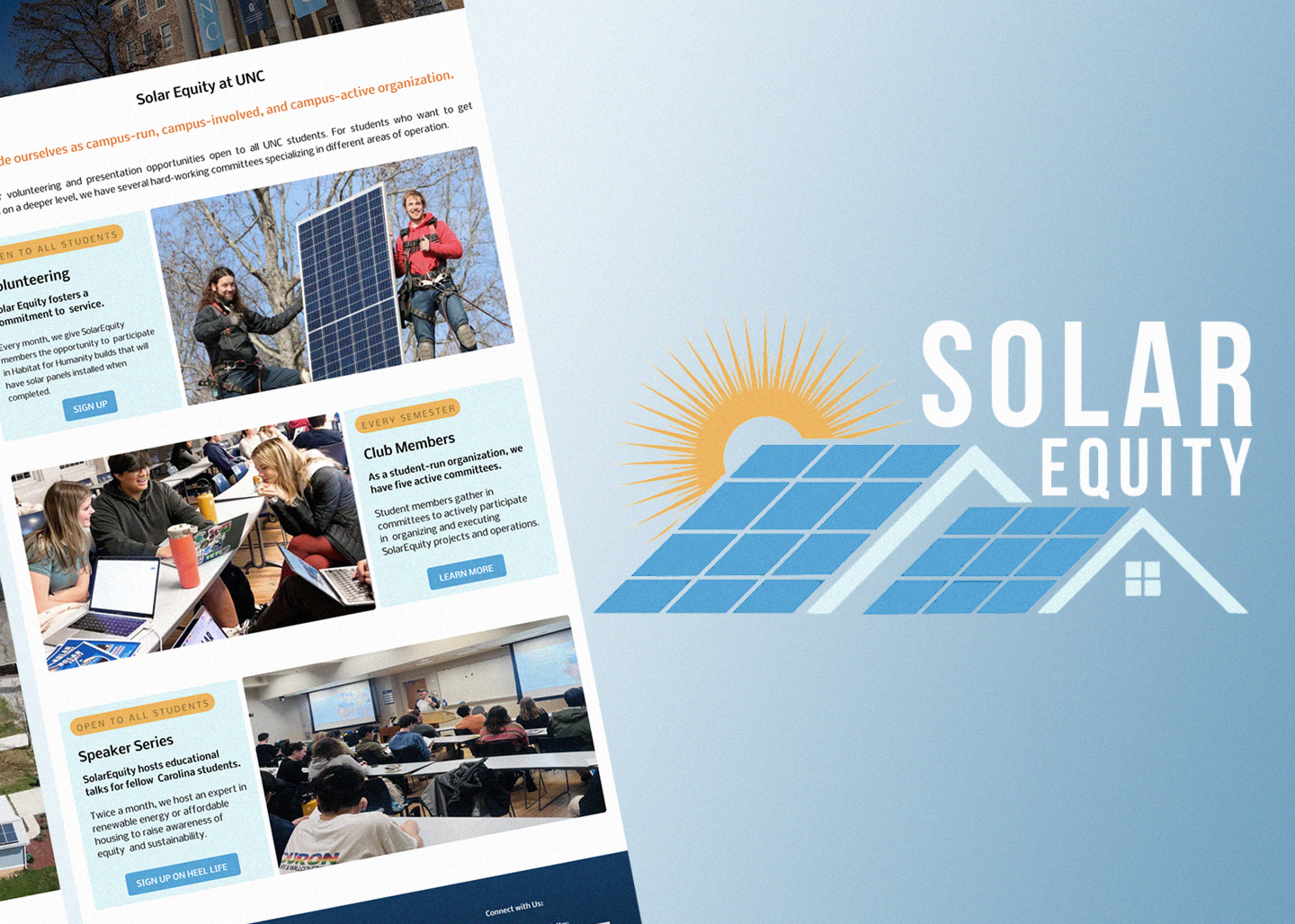
Solar Equity: Optimizing Information Architecture and Design
Streamlining information architecture and customer experience.
| Role | Duration | Project Type | Tools/Skills |
|---|---|---|---|
| Project Lead | 4 Months | Partnership | Product Management, Figma, Surveys |
Summary
I worked with Solar Equity, a non-profit green-energy organization at UNC Chapel Hill. Solar Equity receives donated solar panels and works with local partners to install the solar panels and record them on tax data. Local sponsors also donate to Solar Equity to help fund their mission. Students either join as members or can simply volunteer their time. The club also runs events jointly with UNC like the "Solar Strides" marathon event.
